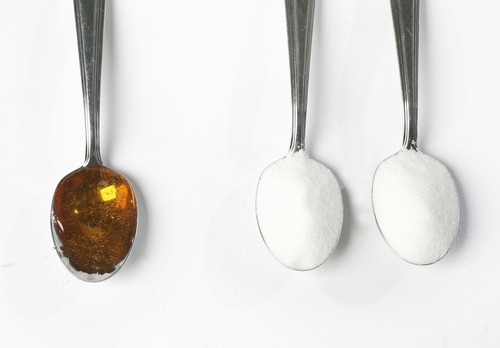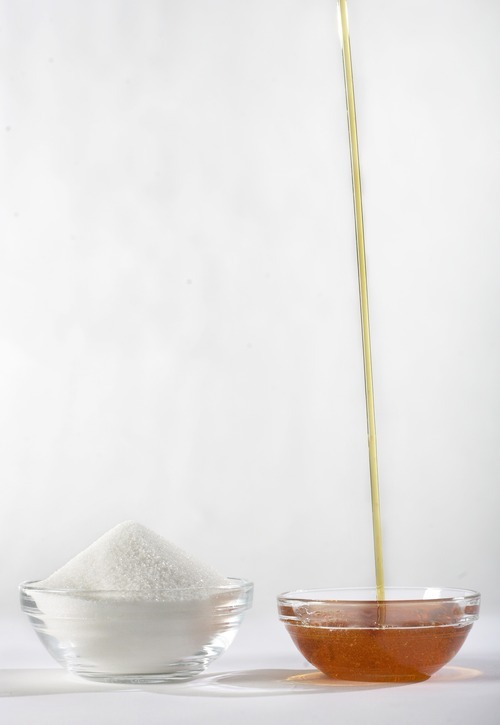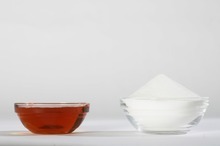This is an archived article that was published on sltrib.com in 2011, and information in the article may be outdated. It is provided only for personal research purposes and may not be reprinted.
Julia Anderson Miller reaches for her bottle of agave several times a day.
She puts the honeylike syrup — which comes from Mexico's famed agave plant — in her morning coffee. She uses it when baking coconut macaroons, pumpkin pie and banana bread.
"When I trained for half-marathons I used it on my oatmeal before long runs," said the Liberty resident. "It just tastes better than sugar."
For centuries, tequila was the most popular use for the agave's sweet, sticky juice. But in recent years, agave has become a popular natural food sweetener. It is twice as sweet as regular sugar, but has half the calories. Agave also registers low on the glycemic index, which means it creates only a moderate rise in blood glucose levels.
That's good news for people with diabetes or those trying to lose weight, says Brent Larson, a doctor and owner of Physician for Living Diet, a medical weight-loss clinic in Salt Lake City. "Agave is sweeter than sugar, so it allows you to use less and take in fewer calories. Fewer calories usually mean smaller waistlines."
When cooking, agave can be used as a substitute for white granulated sugar, brown sugar, honey, maple syrup or corn syrup. When a recipe calls for 1 cup sugar, cooks can use 1/2 cup of agave instead. (See recipes that accompany this story.)
Agave has a long history of use for medicinal purposes. The Aztecs used it to clean wounds and as a balm for skin infections. And for centuries, it has been distilled to make tequila. But as the health benefits of agave nectar have become more widely known, it has gone mainstream.
There are several brands of agave sold at local grocery stores and big-box warehouses. These brands are made from either the blue agave plant or the white agave and range in color from light to dark. There also is a brand made in Utah, called Xagave, made with a blend of blue agave and white agave nectars.
Even though it is a natural sweetener that is low in calories, agave should be consumed in moderation, warns Lee Schussman, a family physician at the Intermountain Health Care Clinic in Ogden. Whether it's table sugar, high fructose corn syrup, honey, molasses or agave, "sugars can be harmful to one's health," he said. "They promote obesity, diabetes and atherosclerotic heart disease. Their dietary intakes should always be minimized."
Sondra Shannon, of Salt Lake City, claims agave has helped her control a recurring infection that has troubled her during her third pregnancy.
"When my symptoms flare up, I have to avoid sweeteners altogether," said the wife and mother of two. "However, when my symptoms mellow and I can handle sweets again, I prefer agave as it does not aggravate my condition at all."
Shannon also likes the taste.
"We had an agave apple pie for Thanksgiving," she said. "I can sincerely say it was the best apple pie I ever had."
Jennifer Burns is the cooking host on Fox 13's "Live at 11" and author of the Cooking Delight cookbook. —
What is the glycemic index?
The glycemic index is a numerical scale used to indicate how fast and how high a particular food can raise our blood sugar level. A food with a low GI will typically prompt a moderate rise in blood glucose, while a food with a high GI may cause blood glucose level to increase above the optimal level. Eating foods that are lower on the scale can help maintain blood sugar levels, in turn helping to prevent heart disease, improve cholesterol levels, prevent insulin resistance and type-2 diabetes and achieve or maintain a healthy weight.
Source: The George Mateljan Foundation —
Sugar snap pea and tomato salad with agave dressing
Agave dressing
2 tablespoons fresh lemon juice
1 teaspoon white wine vinegar
2 teaspoons agave sweetener
1 teaspoon sesame oil
3 tablespoons extra virgin olive oil
Salad
1 pound sugar snap peas, trimmed, stringed, cut in half
5 to 6 radishes, trimmed, thinly sliced
4 ounces feta, crumbled
2 tomatoes, diced
6 to 8 fresh basil leaves, chopped or torn
2 teaspoons toasted sesame seeds
Salt and pepper, to taste
For the dressing, whisk lemon juice, vinegar, agave sweetener and sesame oil in a small bowl. Add salt and pepper to taste. Drizzle in the olive oil.
Cook peas in a large pot of boiling salted water until crisp-tender, about 2 minutes. While the peas are cooking, fill a large bowl with ice water and set near the sink.
When the peas are cooked, drain and transfer to bowl with ice water to cool. Drain peas again.
Toss peas, radishes, tomatoes and cheese in a large bowl. Add dressing and toss to coat. Season salad with salt, pepper and sesame seeds.
Servings • 8
Source: Jennifer Burns —
Frosted Pumpkin Cookies
Cookies
1/2 cup butter, softened
3/4 cup agave sweetener
2 eggs, beaten
11/2 cups fresh cooked pumpkin, drained (or use canned)
21/2 cups all-purpose flour
3 teaspoons baking powder
1 teaspoon cinnamon
1/2 teaspoon nutmeg
1⁄3 teaspoon ginger
1/2 teaspoon salt
1 cup raisins, optional
1 cup chopped nuts, optional
Frosting
3/4 cup heavy cream
1 cup cream cheese
1/4 cup agave nectar
1 tablespoon vanilla extract
Heat oven to 400 degrees. Mix the butter and agave together in a mixing bowl. Stir in eggs and pumpkin.
In a separate bowl, whisk flour, baking powder, cinnamon, nutmeg, ginger and salt until well combined. Add the dry ingredients to the pumpkin mixture until well blended. Stir in raisins and chopped nuts, if using.
Drop by teaspoonful onto a greased cookie sheet in batches. Bake for 12 to 15 minutes.
Remove cookies from oven; allow to cool 1 minute. Transfer to a wire rack to cool completely.
Meanwhile, make the frosting. Whip heavy cream until stiff. In a separate larger bowl, whip cream cheese until smooth. Blend in agave and vanilla. With a rubber spatula, gently blend whip cream into cream cheese mixture. Drizzle cookie with desired amount of frosting.
Servings • 3 dozen
Source: Jennifer Burns







